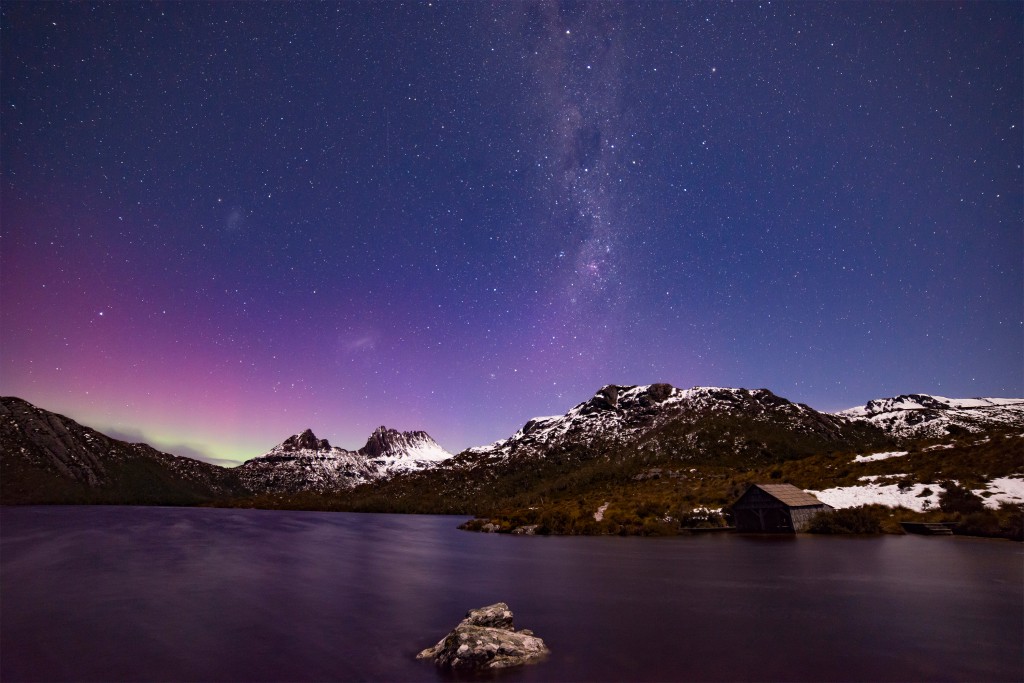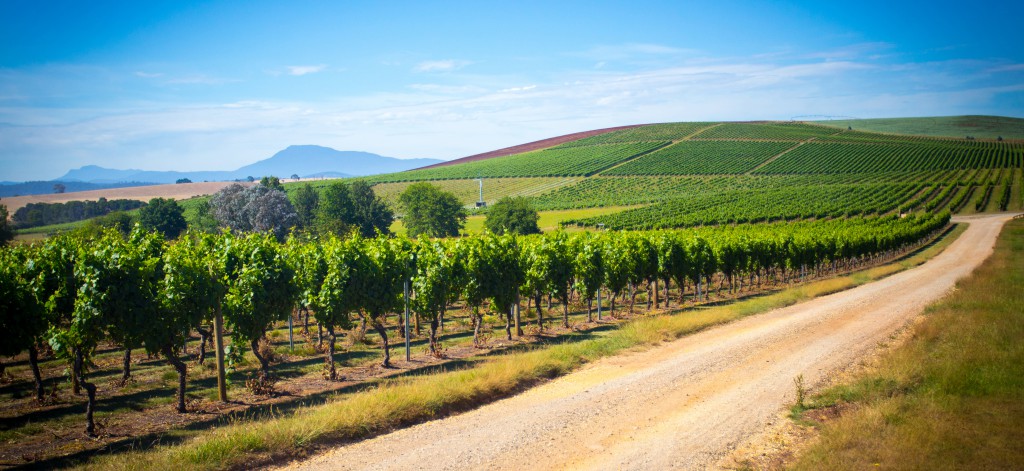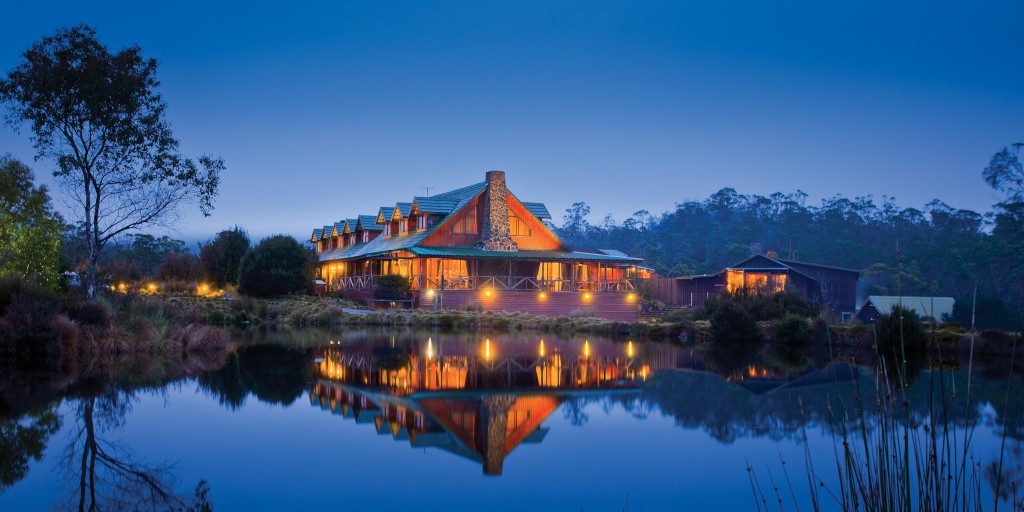Islands of Wine
In Tasmania, the locals maintain that Cradle Mountain is the centre of gravity. Sooner or later, they say, people are drawn to the serrated mountain in the northwest and the wild beauty that surrounds it. And when I ask the locals for their pick of scenic routes to Cradle Mountain they shoot right back, “Where’s your starting point, mate?” the inference being that from whichever point of the Tasmanian compass one sets out, the scenery will please.
The route we chose meandered like the Tamar River. We had set out from Launceston, a historic and charming city on the mouth of the Tamar and within about 50 kilometres, we had entered the fertile valley named after the river that feeds it. The long, lazy Tamar flows inland for about 65 kilometres, flushed by the fresh waters of adjoining rivers. The waters flow around hills, through plains and bush to beaches.

This fertile ground produces not only high-yielding vineyards and some of Australia’s best cool climate wines, but also a veritable bounty of fresh food from orchards and pastures. After a first sampling of cheeses and berries on the Tamar wine route, we tossed our plan to reach Cradle Mountain by midday out the car window.
The scenery had me reaching for a camera – fields of lavender, laden fruit trees, little riverside villages, forested hills. And never long out of sight are the vineyards. On the lower slopes of the mountains, the vines dig into soils formed from ancient sand- and mudstone, and more recent river sediments and rocks of volcanic origin. Vintage variations are said to be greater in Tasmania than elsewhere in Australia, and Tasmania’s cool climate wines – such as pinot noir, sparkling, riesling, chardonnay, sauvignon blanc, cabernet sauvignon and pinot gris – have won coveted international awards.

In the north of Tasmania, at a latitude of about 42 degrees south, the Tamar Valley shares the same cool climate as France’s famous wine region of Burgundy. Tasmania has what is known as a ‘temperate maritime climate’, cooled by westerly winds coming off the Southern Ocean. Mild summers, long autumn days, and cool nights allow the grapes to ripen slowly on the vine and to result in elegant wines of freshness, balance and intense flavour.
Being drawn not only to distinctive wines but also to native animals, I was keen to drive on to Narawntapu National Park, where some of Tasmania’s distinctive four-legged creatures reside. But the Travelling Companion Who Must Be Obeyed decreed our remaining time in the valley was best spent sampling more of the local wines. In reverential tones, he noted that Tamar was also the origin of the cuttings which generated first vineyards in Victoria and South Australia.
As a concession for not being able to explore the national park and Low Head Coastal Reserve, where the world’s smallest penguins waddle ashore, I passed a heady half hour tasting homemade quince jams. Then it was back on the wine route.
As early as the middle of the 19th century, a commercial vineyard had been established in the riverside town of Windermere on the eastern banks of the Tamar. Early European migrants noted parallels in Tasmanian soils and climate with the legendary grape-growing regions of their fatherlands. The resulting experimentation produced a wine that was shown proudly at the Paris exhibition in 1848, dismantling the theory that Tasmania was too southerly for grapes to flourish.
However, it wasn’t until a century later that a Frenchman, Jean Miguet, established a vineyard at Lalla, now known as Providence. This son of a French winemaking family from Provence was luckier with his timing. By the mid-20th century, Australia was weaning itself off a steady relationship with sherries and ports to embrace the pleasures of table wines.
From the Valley to Pipers River in the north and Relbia in the south there are more than 32 wineries, all within driving distance of one another. There are no fewer than four wine routes in Tasmania, a fact that my companion would very much have liked to explore further, had the sun not been moving lower on the western horizon.
By the time we were ready to continue on the road, we had become acquainted with several notable Tamar vineyards. Pipers Brook and Heemskerk developed from the original home of Tasmania’s sparkling, Jansz. The Heemskerk moniker harks back to 1642 when the Dutch explorer Abel Tasman sighted the west coast of Tasmania aboard his flagship of the same name.
It was late afternoon when we finally set out for the fabled mountain. On its slopes approximately 200 kilometres away, was our accommodation at Cradle Mountain Lodge — where some of Tasmania’s finest wines would accompany the degustation menu.

Top of the agenda for the next day was a visit to nearby Waldheim. A sealed road becomes a narrow dirt track leading to up to a gingerbread-like house dwarfed by towering native forest. On a sign near the door is written:
This is Waldheim
Where there is no time
And nothing matters.
The words were written by Gustav Weindorfer, a nature-loving Austrian who fell in love with the region when he came upon it in 1909. Kate, his Australian wife, was as enchanted as her husband with Cradle Valley, and in long skirt and boots became the first woman to climb Cradle Mountain. Gustav told her, “This place is beautiful, Kate, and must be preserved for all people for all time.” Kate bought 81 hectares in the valley and the couple moved into a rustic dwelling that Gustav built from native timber.
Life was a challenge in the remote wilderness home tucked in the shadow of the mountain. Gustav carried supplies in on foot up a 15-kilometre track; packhorses and a motorbike were later used to ease the journey. But there was no escaping the harsh winters, when the water frequently froze in the pipes overnight.
Until his death, Gustav Weindorfer lived in the mysterious silence of the surrounding forest, lobbying the Tasmanian government to save the region from the rape of native timber that was occurring on all sides, and to preserve it as a national park. He lived to see 64,000 hectares between Cradle Mountain and Lake St Clair come under government protection, but died 40 years too soon to see the area set in concrete as a State Reserve by the National Parks and Wildlife Act in 1971.
Eleven years later, the Cradle Mountain — Lake St Clair National Park, together with adjacent Wild Rivers and Southwest National Parks, were distinguished with World Heritage status.
A faithful replica of Waldheim — German for ‘forest home’ — is now a small and fascinating museum. An annual service on New Year’s Day commemorates the tireless crusade by the man from Austria and his Australian wife to preserve the beauty of the region for all people for all time.

